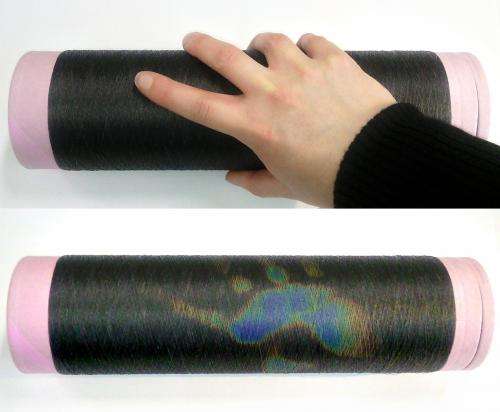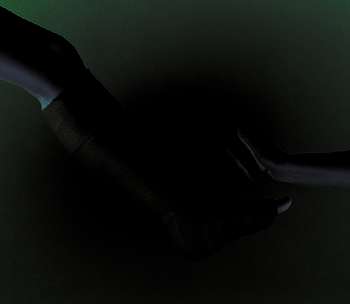Australians develop 'smart' bandage

(PhysOrg.com) -- Melbourne researchers have developed smart bandages that change colour to reveal the state of the wound beneath. Their invention could reduce the $500 million cost of chronic wound care in Australia.
“We hope that the dressing could lead to more rapid and effective treatment of chronic wounds such as leg ulcers, saving time and money, as well as improving patient well-being,” says the lead inventor Louise van der Werff, a CSIRO materials scientist and Monash University PhD student.
“We’ve created a fabric that changes colour in response to temperature – showing changes of less than 0.5 of a degree. We expect that, when incorporated into a bandage it will allow nurses to quickly identify healing problems such as infection or interruptions to the blood supply, which are typically accompanied by a local increase or decrease in temperature,” she says.

So far the team has created the fabric. Within six months they’ll have turned it into a bandage, and then they’ll work with industry to trial the new bandages. A manufacturer of bandages is supporting the research.
Up to 3 per cent of Australians suffer from chronic wounds, costing the healthcare system more than $500 million each year. Reduced blood supply due to systemic diseases such as diabetes, or inflammation as a result of infection, can lead to significant delays in healing.
“If problems are not quickly identified and treated,” Louise says, “Wounds can persist for months or years resulting in a major reduction in quality of life. And the average cost of treatment is over $25,000 per wound.”

The colour-changing material the researchers have developed is in the form of a fibre, which may be woven or knitted into a loose textile product for incorporation into a wound dressing. It will allow both patients and clinicians to determine the temperature across the wound and surrounding tissue without using electronic equipment. They simply compare the colour of the fibres with a calibrated chart.
This could lead to more timely, effective and relevant treatments by doctors and nurses and to limited self-diagnosis by patients allowing faster closure of the wounds.
“Having the ability to collect a broader range of data on a wound’s status will have a significant impact on the understanding of chronic wounds and how best to treat them,” says Mr Robin Cranston, the leader of the joint research project.

















